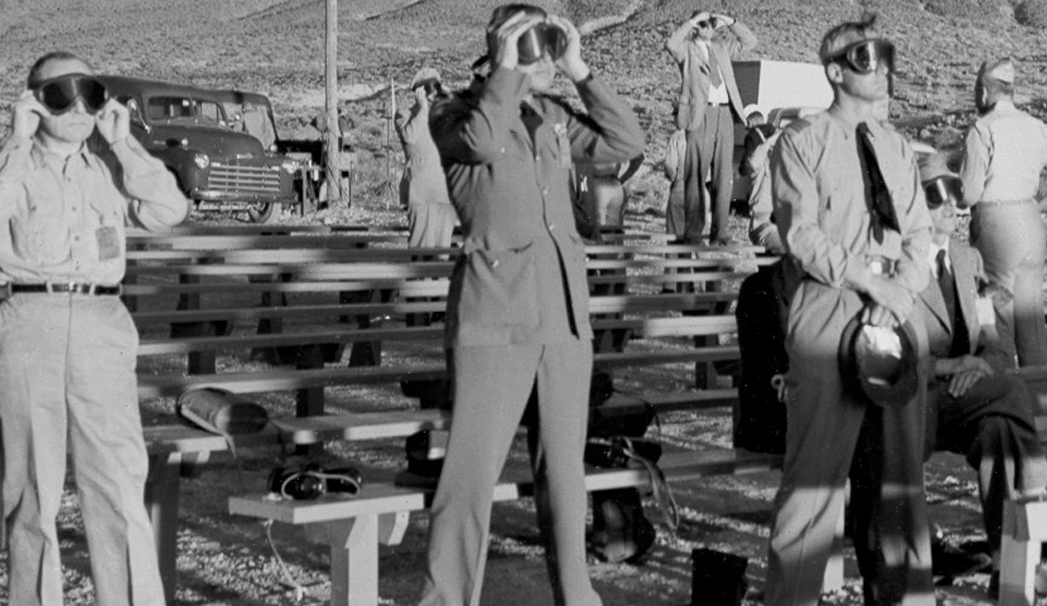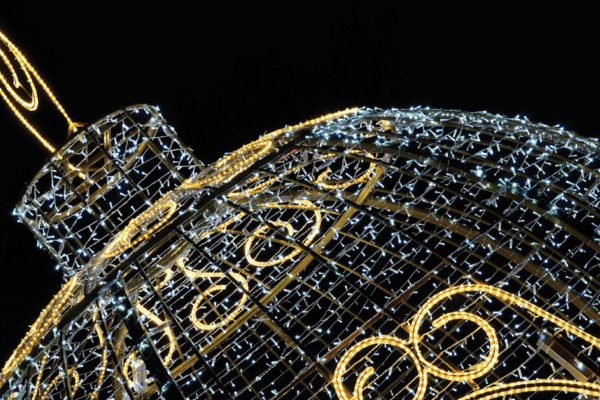On April 1, 1952, a 1-kiloton atomic bomb, part of the U.S. military’s Operation Tumbler-Snapper – aimed at developing tactical nuclear weapons – was detonated at Area 5 of the Nevada Proving Ground, later known as the Nevada Test Site. That same year, The New York Times reported that filming of 20th Century-Fox’s Pony Soldier in Sedona was disrupted when the blast’s light flash was picked up by the sensitive Technicolor camera, and haze from the atomic cloud ruined background shots. Located less than 350 miles from peace-loving Sedona, the 1,360-square-mile nuclear weapons testing complex (roughly the size of Rhode Island) was renamed the Nevada National Security Site in 2010. All in all, a total of 928 atomic bombs were exploded there between 1951 and 1992, giving the place the dubious honor of being the most nuked spot on earth.
These days, Armageddon has a gift counter (cash only, please). Since the late 1960s, the Nevada Field Office of the National Nuclear Security Administration has offered the public a free, 8-hour guided tour of the remote, strictly off-limits, A-bomb test range. Once monthly, a 50-seat charter bus departs for the site from The National Atomic Testing Museum, located 65 miles away in fabulous––and historically linked––Las Vegas. In the 1950s, Sin City saw a tourism boom when it exploited Cold War fear. The chamber of commerce advertised blast schedules and cheerily recommended the best vantage points for gamblers to watch mushroom clouds sprout over the neon horizon. The curtain came down on this desert floor show in 1963 when the Limited Test Ban Treaty halted atmospheric tests and atomic research went underground, where it stayed for 29 years until all weapons testing stopped. At the time of writing, the most recent detonation at the site (non-atomic) took place in October 2016, using chemical explosives equivalent to 2.5 tons of TNT to test methods for detecting underground nuclear explosions.
The Nevada National Security Site is not some tourist attraction you can roll into on the spur of the moment during a Winnebago road adventure. Because much of its present-day operations remain classified, every tour applicant is subjected to a background check, and it can take months for the all-clear signal to sound. Preparedness is not an option at this hot spot; seats on tour buses are already filled into early-2019, so visits need to be planned far in advance. There are also firm rules to be followed on premise. Absolutely no photography is permitted, and sightseers must leave their cameras, iPads and cellphones at home. Gear ranging from binoculars to Geiger counters is prohibited, and armed sentries are authorized to perform random checks for contraband. You’d better believe the government is deadly serious about safeguarding America’s atomic secrets. The official who led our tour, a high-ranking test administrator during the grimmest days of the nuclear arms race, cautioned us that at this place any unauthorized individual discovered in a restricted area is subject to being “shot on sight with no questions asked.”
Despite the many years of multimegaton pummeling, there is no exposure to dangerous radioactive contamination during public tours. Contrary to what we’ve all seen in countless low-grade monster movies, nuclear radiation rates actually deplete very quickly. A five-hour cross-country airplane flight exposes passengers to more radiation than a visitor will encounter during a comparable time spent at the site. Still, some riders may feel uneasy when the tires of their bus are scanned with a Geiger counter following a drive through the low-level-radioactive-waste disposal facility at Area 5. The disposition acreage itself is a macabre sight, a collection of shallow burial plots eerily similar to the kind of mass graves found in a big-city Potter’s Field.
Atomic alert! Not everything on the ground was vaporized during atmospheric testing, and there are quite a few surviving blast relics strewn about the site. Contained within Area 5 and Area 11 is Frenchman Flat, a 123-square-mile dry lake bed rattled by 14 above-ground shots over 11 years. A familiar backdrop for mushroom clouds from decades of scaremongering PBS documentaries, this landscape is a dreamscape for A-Bomb archaeologists. Days of battle long past, the Frenchman is scarred by cruel reminders of Atom Age service: a buckled railroad trestle, a pulverized Mosler steel bank vault, mangled concrete frame structures and blistered animal pens that once held unwitting test specimens for hammering by bursts of thermal radiation.




